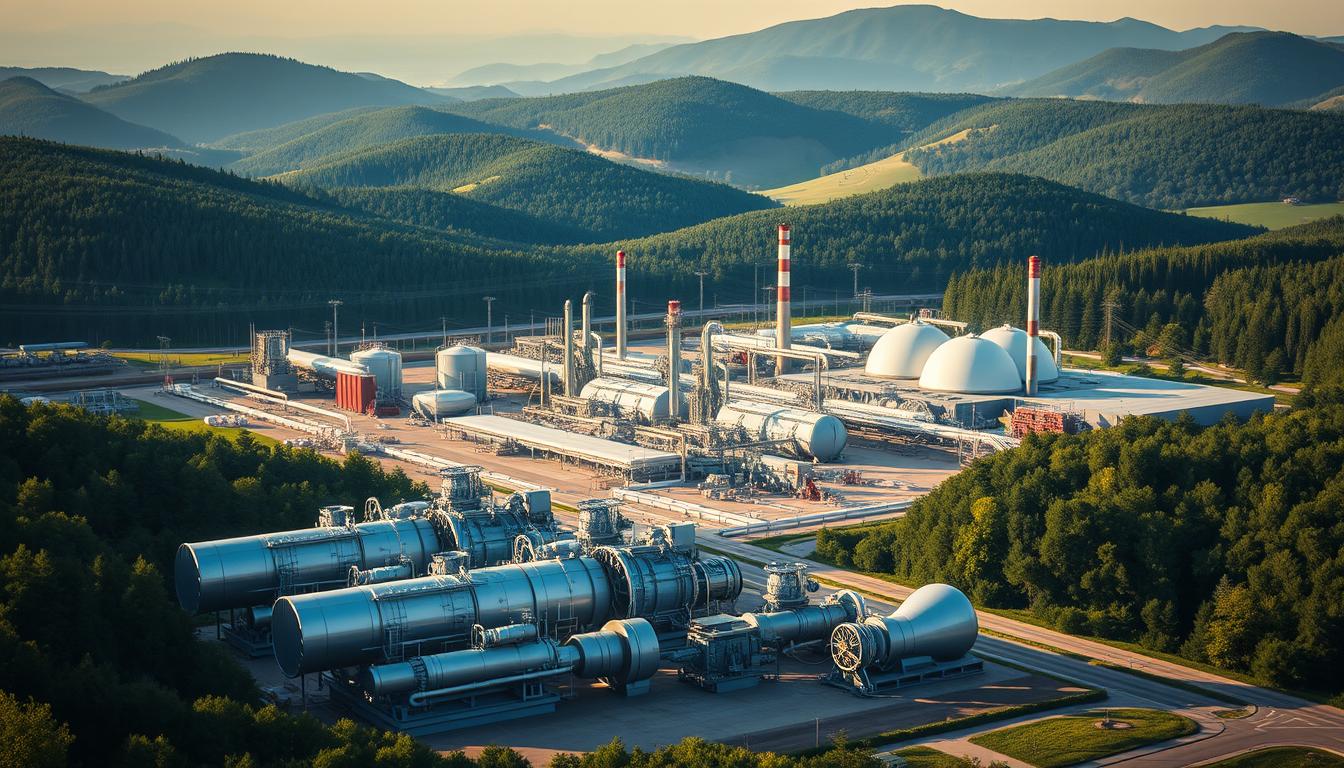Why America’s Power Demand Is Surging—And How Natural Gas Will Fill the Gaps

Introduction
Electricity demand in the U.S. is entering an era of tremendous growth. Accelerated by artificial intelligence (“AI”), widespread electrification, the rising load from new data centers and population expansion, the energy value chain is facing unprecedented pressure.
In 2024, grid operators and utilities are already seeing a measurable surge in electricity demand. By 2025 and beyond, this trend is forecast to intensify. As examples, (i) the Southwest Power Pool is predicting 40 to 80% growth in demand by 2050, “Southwest Power Pool will need up to $263 billion in generation and transmission by 2050 – EUCI”, (ii) ERCOT is predicting 100% growth in demand by 2030, “https://www.ercot.com/gridinfo/load/forecast”, and (iii) PJM expects summer peak loads to increase by over 200% over the next 15 years, “2025 Long-Term Load Forecast Report Predicts Significant Increase in Electricity Demand | PJM Inside Lines”. As the nation works to replace fossil fuels with renewable energy, the need for system reliability and consistent energy output remains urgent. Natural gas continues to be the most viable option for ensuring flexibility, affordability, and energy security amid this transformation.
This significant increase in demand and corresponding need for infrastructure presents both systemic challenges and strategic opportunities. From federal energy policymakers, independent system operators, independent power producers, local utilities, to natural gas pipelines, energy sector leaders must balance increasing electricity generation demand and transmission system investments with emission reduction goals, grid resilience, voltage support needs, and dispatchable base power generation.
Through 2050, natural gas generation is expected to remain essential in providing for this increase in power demand, preventing risk of blackouts, enabling the retirement of aging coal fired power plants, and supporting variable renewable energy sources “Natural Gas Role in Era of Renewable Power Generation Resources – Woodway Energy”.
Factors Driving the Surge in Power Demand
The increasing electricity demand in the U.S. reflects broader changes in the global energy landscape.
With the steady growth in U.S. population, there comes a corresponding need for increased supply of residential, commercial, and industrial power generation needs. However, the additional proliferation of energy-intensive AI and data applications is driving up power generation and transmission needs even more significantly than traditional sources of demand.
Together, these trends are contributing to an energy system that must evolve quickly to meet the quickly accelerating demand.
Population Growth and Urbanization
America’s growing population is placing mounting pressure on the nation’s power industry. With every new household, school, business, and industrial facility that comes online, electricity demand grows accordingly. Rapid urbanization, especially in major metro areas, is driving concentrated spikes in energy consumption that utilities must prepare for in real time.
These demographic and geographic shifts are not only reshaping the way energy is used but also challenging the grid’s ability to supply power efficiently and reliably.
Statistics on U.S. Population Growth Projection Through 2040
By 2040, the U.S. population is projected to exceed 380 million. This population increase is expected to add tens of millions of new residents to urban areas, placing additional strain on the electricity grid. According to the U.S. Energy Information Administration (EIA), this growth correlates with a measurable rise in electricity demand higher than previous decade averages.
| Year | Projected U.S. Population | Electricity Demand (TWh) |
| 2023 | 334 million | 4,000 |
| 2025 | 340 million | 4,250 |
| 2040 | 380+ million | 4,800+ |
Impact of Urbanization on Energy Consumption
Urbanization is driving dense energy consumption within metropolitan hubs. From increased electric vehicle (EV) charging stations to vertical housing and commercial buildings powered by electricity, cities are becoming increasingly energy-intensive clusters. Utility providers are now forecasting an increase in electricity demand growth specifically in urban cores.
Expansion of Data Centers and AI Technologies
The dramatic rise in AI and data center demand is reshaping the U.S. energy profile. These facilities operate 24/7, consuming large amounts of electricity to power servers, manage cooling systems, and process vast data loads. As AI applications increasingly become embedded across additional business sectors, from banking to healthcare, the accelerating demand for reliable energy at scale is becoming more urgent.
Key areas driving energy-intensive use in AI and data centers include:
- Server operations: Constant data processing and storage require continuous and reliable power supply.
- Cooling systems: Maintaining optimal temperatures for high-performance computing equipment.
- Networking infrastructure: Managing high-speed data transfers and cloud computing workloads.
- Backup power systems: Ensuring uptime and continuity in the case of any grid instability.
- Data replication and redundancy: Duplicating data across centers for security and access reasons.
Data center demand surged by more than 25% in 2023 alone. With thousands of new data centers expected to come online by 2030, the energy use of AI and data infrastructure will only grow. These new data centers often consume between 100 MW and 500 MW each—equal to the output of a small power plant. Artificial intelligence relies on immense computational power. Data from 2024 shows that just AI data centers alone could use up to 8% of U.S. electricity by 2030.
These operational intensity requirements, combined with the accelerating demand for hyper-scaler data center developer services, explain why electricity demand from AI and data infrastructure is forecast to grow significantly through the end of the decade, as reflected earlier in this article by the large increases in demand predicted by SPP, ERCOT, and PJM.
The Power Transmission Interconnect Queue Length
With growing demand from the data sector, many developers face long electric transmission grid interconnect queue delays of two to five years. As a result, data center operators are increasingly investing in on-site natural gas generation or entering partnerships with utilities that provide natural gas power generation, as well as pipeline companies that provide natural gas pipeline infrastructure.
Advancements in AI Algorithms Reducing Power Consumption
New breakthroughs in AI model design are reducing the computational load required to train and run advanced systems. More efficient energy usage means that even as demand from AI increases, its overall power intensity can decline. As an example of the potential efficiencies in this space, DeepSeek AI has recently developed cutting-edge models that consume 45% less energy per training cycle (660 MWh per training cycle in 2024) than earlier predecessor algorithms (averaging 1.2 GWh per training cycle in 2022). These improvements in the future have the potential to somewhat ease the afore-mentioned forecasted pressure on the energy grid.
The Role of Natural Gas in Bridging the Energy Gap
Natural gas transmission, storage, and power generation infrastructure offers a critical solution for quickly and reliability meeting the rising electricity demand in the U.S.
As renewable energy sources continue to scale, natural gas provides the stability and load-following capabilities needed when the wind is not blowing, and the sun is not shining. The natural gas value chain’s high availability, flexible ramp rates, and attractive emissions profile make it a necessary component of the nation’s energy strategy that compliments renewable energy sources, and provides a more attractive alternative to the coal value chain.
Complementing Renewable Energy Sources
As the U.S. continues its build of renewable energy sources, it must also account for the variable nature of resources like wind and solar. Natural gas acts as a reliable partner to renewables, helping maintain grid stability during periods of low renewably sourced energy production. The natural gas value chain’s dispatchable nature allows it to fill in the gaps and prevent energy shortfalls, by providing both baseload energy supply, as well as peaking needs.
Why Natural Gas Power Generation Is Required
Beyond intermittency, natural gas helps utilities maintain frequency control and grid voltage support. This is vital for maintaining the health of the energy system during unexpected demand spikes or rapid changes in supply.
In addition, as coal plants retire and new nuclear remains slow to build, gas-fired generation continues to be the most scalable short-term solution.
Natural gas peaker plants can respond to electricity demand within minutes. These rapid-response capabilities allow utilities to avoid disruptions when demand spikes due to weather, peak demand hours, or renewable output declines.
Summary – Power Generation Industry Acceleration
Looking ahead, the U.S. energy system must navigate a future marked by rapid electrification, growing data demands, population growth, and the ongoing energy transition. Natural gas will remain central to this journey, providing the critical support needed for grid stability, economic growth, and emission reductions.
By complementing renewables and supporting new data centers, it ensures a balanced and resilient energy mix.
With electricity demand in the U.S. rising at historic rates, strategic investment in energy and natural gas infrastructure is essential. It’s the most efficient energy solution available today to meet the rising electricity demand forecasted through the end of the decade, and beyond.
Citations
U.S. Energy Information Administration – www.eia.gov
International Energy Agency – www.iea.org
Energy Institute Statistical Review 2024 – www.energyinst.org
DeepSeek AI Whitepaper – www.deepseek.ai
ERCOT Grid Reports – www.ercot.com
CAISO Reports – www.caiso.com


